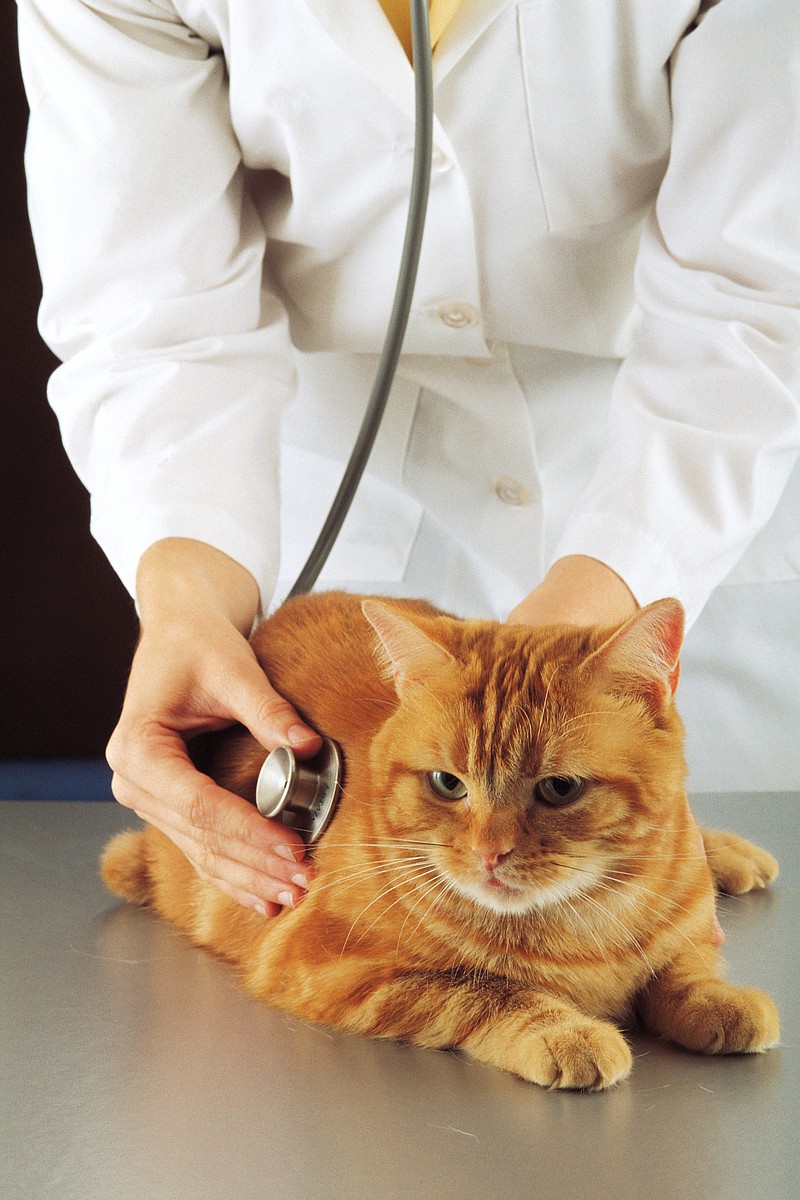Among the diseases, symptoms, and issues cats face as they enter their senior years, hypertension, or high blood pressure, is on the list. High blood pressure can be the result of an underlying disease. It can also be the cause of an oncoming problem. How do we know if our cat has high blood pressure? What can we do for them if they are diagnosed with hypertension? Let's make sure we are doing all we can to screen our feline friends for this disease!
Blood pressure is determined by the amount of resistance the blood encounters as it makes its way through the body's circulatory system. We can picture what might happen if we pinch off our garden hose while the faucet is on: a buildup of pressure develops in the area before the "pinch." Likewise, in a cat's arteries, if blood flow is restricted, pressure builds up. There are several possible causes for this type of circulatory problem. In cats, the most common of those causes include kidney disease, thyroid disease, and diabetes. With any case of high blood pressure, cats should be screened for possible underlying disease. High blood pressure is seldom a stand-alone problem in animals.
We measure blood pressure to screen senior-aged kitties for hypertension, or when we suspect it as a cause for other symptom. The measurement is performed similarly to the process used in human medicine -- a blood pressure cuff is placed on the cat's limb, air is pumped into the cuff, and the measurement is taken. We utilize the systolic pressure only in our assessment. Systolic pressure is the "top number," which correlates to the pressure in the arteries as the heart pumps to push blood out to the body. A cat's systolic pressure should read below 160 mm Hg. Readings above 160 indicate high blood pressure. Readings over 180 mm Hg can be very significant and cause concern for organ damage.
Within the vet clinic setting, it is possible for blood pressure to measure higher than it would at home. However, cats are magical in that they can regulate their blood pressure even while under stress. To obtain an accurate reading, we typically perform at least three measurements, allowing the patient to relax between each. We then take an average of those three numbers to record our final result.
If hypertension goes untreated, possible complications we find include vision loss, kidney damage, stroke, blood clots, progressive heart disease, etc. These effects can be irreversible, and even life-threatening. In some cats, these detrimental consequences are the first signs our clients notice of symptoms associated with hypertension. This makes screening and treatment even more important.
If your cat is diagnosed with hypertension, your veterinarian will likely recommend additional testing. This may include blood and urine tests, X-rays, an EKG, or other tests based on their concerns for your cat. These tests are an important part of the process to restore your kitty's health. We may also recommend a more in-depth exam of the heart, eyes, or abdomen that may require us to refer your pet to a specialist.
Blood pressure can be controlled with the use of medication. Routine follow-up visits are essential to monitor blood pressure and to watch for any secondary issues that may develop because of high blood pressure. A well-controlled feline blood pressure patient will need to be examined at least twice yearly, but possibly more often if other diseases or symptoms are involved.
I recommend that cats be screened starting at age 12 years, or sooner if concerns warrant. Cats who are diagnosed with kidney disease, thyroid disease, diabetes, or heart disease should also be routinely checked for hypertension. If your cat falls into one of these categories, please be an active part of their health care. Ask to have their blood pressure checked at their next visit.
